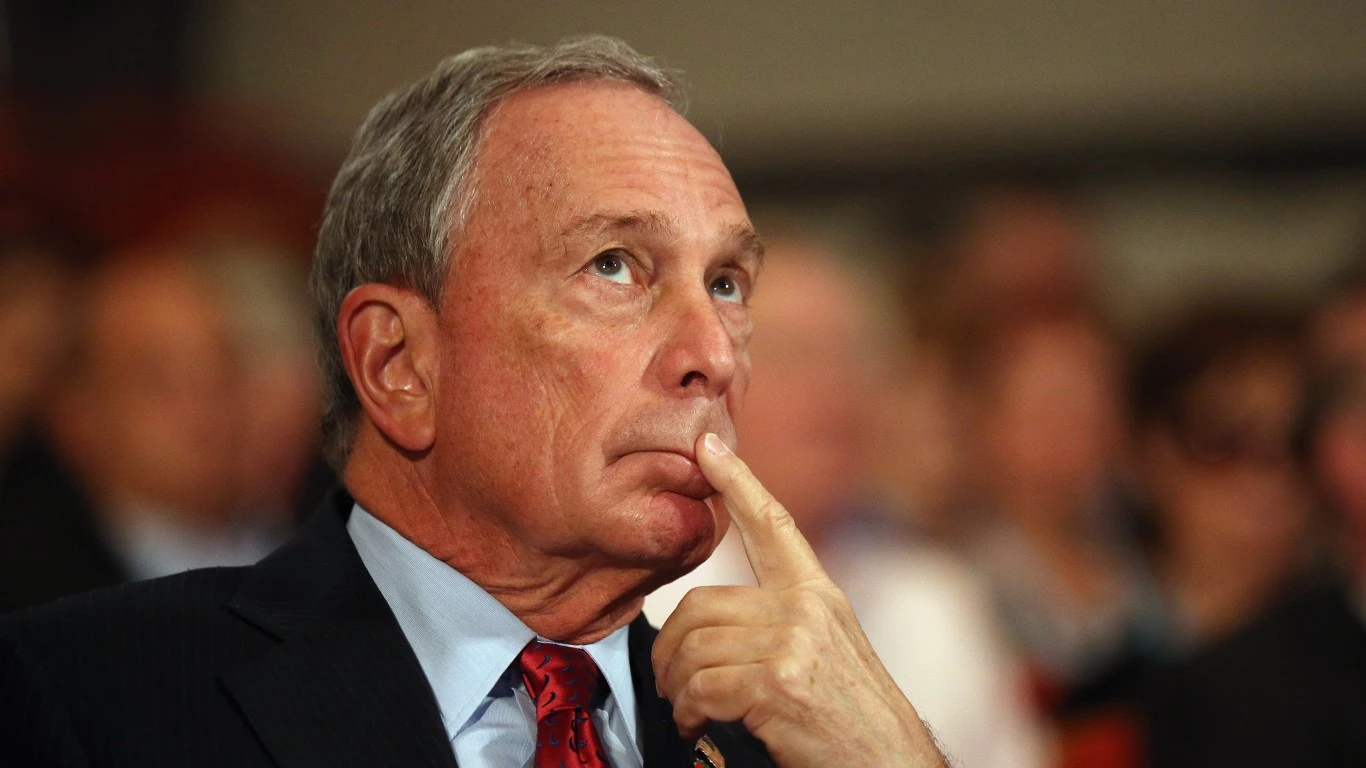
By David Callaway, Callaway Climate Insights
The climate world has been waiting for Michael Bloomberg to make some dramatic philanthropic effort to boost the world’s economic transition from fossil fuels for some time now. He failed to disappoint this week with a $242 million pledge to boost renewable energy in 10 developing countries that should serve as a signal to world leaders talking about helping weaker nations.
Targeting countries in Africa, Latin America, and parts of Asia, the funds would reportedly be spent in part to develop renewable technologies as energy demand rises in these countries, while paying to close coal-fired power plants. By investing in early stage renewable projects, the plan hopes to make the transition before the countries become hooked on fossil fuels.
The money itself represents 50% more than was spent investing in all developing countries just two years ago, but still needs to be more than four times greater to meet demands for more than $1 trillion in spending called for by the International Energy Agency.
More than anything, the pledge should be seen as a signal to international institutions such as the World Bank and International Monetary Fund, which talk a good climate game about helping developing countries, that rapid investment in renewables is a better play than dumping money into disaster management later on.
Investing now in these poorer countries might keep them from a future of fossil fuels or from succumbing to global warming altogether.
More insights below . . . .
Highlights (and one low) from the Dublin Climate Summit
. . . . If there was one message from world leaders and climate investors in last week’s Dublin Climate Summit, it’s that big business must look past the immediate shocks of high inflation and runaway energy prices and double down on investments to provide climate solutions. Irish Taoiseach Michael Martin led an all-star cast of leaders from Wall Street, Silicon Valley, The City of London, and Brussels, punctuated by this stark image from British start-up Cervest about the impact on Dublin from global warming in 30 years if present trajectories are left unchanged. . . .
Read David Callaway’s full report
Tuesday’s subscriber insights: Subaru better late than never to the EV craze
. . . . It seemed a fairly ho-hum announcement — Subaru is building an EV battery plant and an electric vehicle assembly plant in Japan. But it’s quite significant: Once again, a Japanese automaker is late to the game (like Toyota and Honda). Also, given that Subaru builds 70% of its cars in the U.S., why are they ramping up in Japan and not here? Read more. . . .
. . . . In Oregon last summer they were howling when the temperatures reached 117°F. So how about the temps around 120°F. now being experienced in India and Pakistan. In fact, it’s so hot that birds are falling out of the sky. And guess what: All this means air conditioning, which, given those countries’ reliance on coal-fired energy, means the cure for the situation only makes things worse. Read more here. . . .
. . . . The wind power industry keeps making big strides. Here are two new developments that promise to take it to the next level: Floating offshore platforms and new turbines that can efficiently harvest power in low-wind areas. Read more here. . . .
Editor’s picks: Greenpeace blocks ship in UK; U.S. oil company pays for spill
Greenpeace blocks ship from Russia in the Thames
Essex police reportedly arrested eight people after Greenpeace protesters attempted to stop an oil tanker that had arrived in the Thames from Russia. The Independent reported that Greenpeace said activists got past security and climbed to the area where the ship was scheduled to dock Sunday night. The report said activists wearing hard hats and climbing gear held banners saying “oil fuels war” and “fossil fuels war” from the berth. The Independent said the ship, flagged in Greece, is not banned from docking in the UK. “Only Russian ships, not vessels carrying Russian goods, have been shut out from British ports due to the invasion of Ukraine.”
All American Pipeline pays $230 million to settle oil spill suit
Texas-based Plains All American Pipeline (PAA) has agreed to $230 million to settle a class-action lawsuit brought by fishermen and property owners who claimed they were damaged when an oil pipeline owned by the company spilled hundreds of thousands of gallons of crude oil onto Southern California beaches in 2015. CBS News reported that a federal investigation said 123,000 gallons spilled, but other estimates by experts in liquids mechanics were as high as 630,000 gallons. All American Pipeline did not admit liability under the terms of the agreement, which is still subject to a public comment period and federal approval. The Associated Press reports the company apologized for the spill and paid for the cleanup, and also changed its procedures for dealing with onshore pipeline spills.
This week in wildfires
. . . . The 2022 fire season has come dangerously early for the southwestern U.S. More than 700 fires have broken out in Arizona and New Mexico alone this year, torching over half a million acres. The earlier fire season is partly due to the warming climate, says University of Arizona wildfire scientist Molly Hunter. Hunter wrote recently in The Conversation that as temperatures rise, the snow melts more rapidly, more water evaporates into the atmosphere and the grasses and other fuels dry out earlier in the season. Climate change is having an impact, Hunter said: “We now see fires starting in March and April. And if the Southwest doesn’t get a good summer monsoon — the region’s typical period of heavy rainstorms — fire season won’t really stop until we get significant rainfall or snowfall in fall and winter. That means more stress on firefighting resources, and more stress on communities facing fire, smoke and evacuations.” According to Monday’s National Interagency Coordination Center Incident Management Situation Report, there are 18 new large fires in the Southwest Region, and five large uncontained fires. The Hermit’s Peak Fire, a massive blaze burning east of Santa Fe, N.M., is now the largest in the state’s history. . . .





